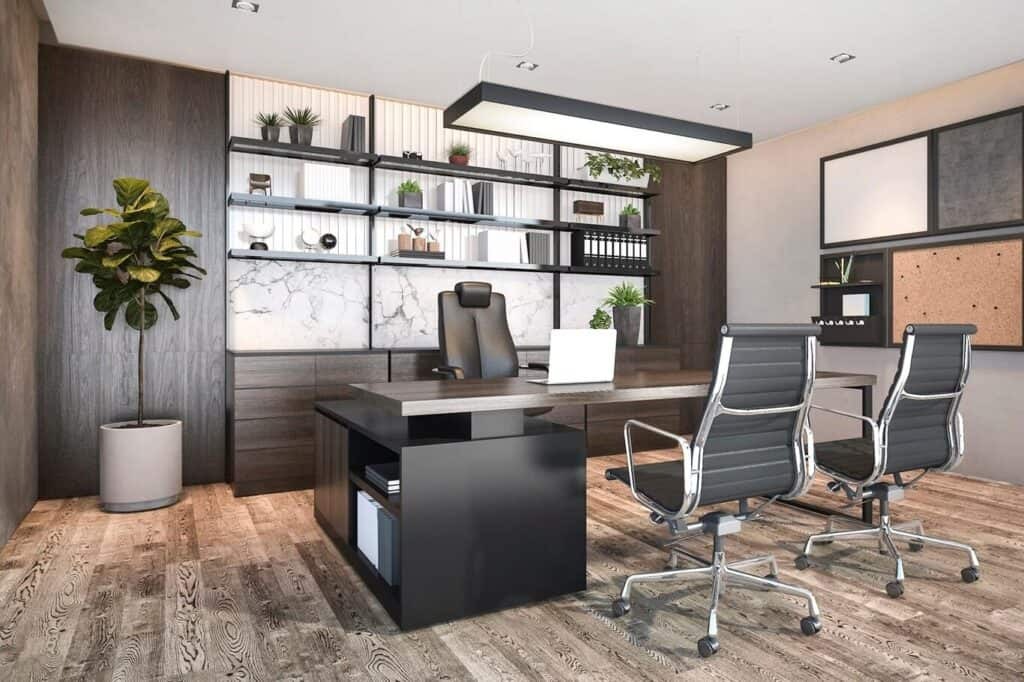How to Upgrade Your Office with Functional and Stylish Workstations

Creating an inspiring office space is no longer just about fitting desks and chairs into a room. In today’s modern work culture, functionality and style go hand in hand when designing a productive environment. Whether you’re running a start-up or managing a growing company, upgrading your office with thoughtfully designed workstations can significantly enhance both employee satisfaction and workflow efficiency. The right setup encourages focus, promotes good health, and makes a lasting impression on clients and visitors alike.
Office design is a direct reflection of your brand’s identity and values. A well-organized, stylish space communicates professionalism, innovation, and care for your team. It isn’t merely about aesthetics; it’s about creating an environment that empowers your team to do their best work. This guide will explore how to successfully upgrade your office with functional and stylish workstations that combine practicality with visual appeal.
Understanding the Role of Workstations in Office Design
Before diving into style trends and upgrades, it’s important to understand why workstations matter. Workstations are the core of any office layout. They define how employees interact with their space, how information flows within teams, and even how comfortably one can sit and work for extended periods. A poorly designed office workstation can lead to physical strain, distractions, and reduced productivity.
Investing in functional workstations is not just a perk—it’s a necessity. Employees spend a significant part of their day at their desks. That means your office layout should provide both personal space and access to collaborative zones. Modern workstations are evolving into multi-purpose hubs that blend focus and flexibility. By choosing adaptable and ergonomically designed furniture, you’re improving the overall work experience and supporting long-term employee well-being.
Designing for Functionality: What Really Matters
The foundation of any workstation upgrade should be functionality. No matter how beautiful a desk looks, if it doesn’t meet the basic needs of the person using it, it will fail to serve its purpose. Functionality begins with ergonomic considerations. Chairs should offer lumbar support, and desks should be at an appropriate height to prevent strain on wrists, necks, and shoulders.
Cable management, storage options, and digital device integration also fall under the functionality umbrella. Consider height-adjustable desks, which allow team members to alternate between sitting and standing throughout the day. This simple change can have a profound effect on posture and energy levels. Similarly, integrated power access and clutter-free cable routing systems keep the space neat and efficient.
Lighting is another often overlooked aspect of workstation functionality. Natural light is ideal, but task lighting with adjustable brightness can help reduce eye strain during extended screen time. Functionality means every element in the workstation setup should serve a purpose—and ideally, more than one.
Infusing Style Without Compromising Practicality
Once the essentials are in place, it’s time to think about aesthetics. Stylish workstations can elevate the mood and energy of your office. Fortunately, functionality and visual appeal aren’t mutually exclusive. In fact, the best office workstations are those that marry clean lines with smart design features. Think minimalistic frames with built-in organizers or sleek desks with subtle storage compartments.
Materials and color palettes play a huge role in defining your office’s look. Wood finishes offer warmth, while metal and glass can give a modern, industrial vibe. Neutral tones can make the space feel calm and focused, whereas pops of color bring energy and creativity. Consider your company’s brand colors and how they can be subtly woven into the overall design. This kind of visual consistency can strengthen your corporate identity and create a sense of belonging among employees.
Office plants, artwork, and personalized touches like framed achievements or team photos can also make workstations feel more inviting. The goal is to create a space that encourages people to show up, settle in, and engage with their tasks in a comfortable, aesthetically pleasing setting.
Embracing Flexibility in Workspace Layout
As workplace norms evolve, so should your office layout. The traditional row-of-desks format is giving way to more dynamic arrangements that support various working styles. Incorporating flexible workstations allows employees to choose how they work best—whether it’s solo focus time, small group collaboration, or quick stand-up meetings.
Modular furniture is a great way to introduce flexibility. Desks that can be easily moved or reconfigured offer endless layout possibilities. Acoustic panels can be added to manage sound and create semi-private zones, while mobile dividers allow spaces to be quickly adjusted as teams grow or shift.
Remote work and hybrid models are also changing workstation needs. Dedicated “hot desks” for occasional in-office workers, small huddle rooms, or touchdown spaces with high-top tables are modern alternatives that enhance adaptability without sacrificing style. Creating a layout that anticipates change ensures your office can grow with your team.
Prioritizing Quality and Sustainability
Investing in high-quality materials not only enhances the look and feel of your office but also ensures long-term durability. It’s easy to be tempted by budget options when redesigning a large space, but quality furniture pays off in reduced maintenance and better employee satisfaction over time.
Sustainability is another consideration that reflects positively on your brand. Opt for office furniture made with recycled or responsibly sourced materials. Brands that prioritize green manufacturing practices are becoming more prevalent and offer stylish, functional pieces that align with eco-conscious values.
Incorporating sustainable design doesn’t mean compromising on style. From reclaimed wood desktops to recycled metal frames and low-VOC finishes, there are plenty of options that align with modern environmental standards while keeping the space looking professional and polished.
Involving Your Team in the Upgrade Process
Any office upgrade should consider the needs and preferences of the people who will use the space every day. Gathering feedback from employees before making big decisions can ensure the final result supports their day-to-day activities. Whether through informal surveys or collaborative workshops, getting input can reveal small but impactful ideas—such as preferred desk heights, lighting preferences, or seating configurations.
When people feel involved in the process, they’re more likely to take pride in their environment and treat it with care. Even better, including your team in the planning process helps create a space that truly reflects their working style and fosters a sense of ownership.
Transparency during the transition—keeping the team updated on design stages, timelines, and expectations—will also minimize disruption. A thoughtful approach to change management can help maintain momentum and morale throughout the upgrade process.
Final Thoughts: A Smarter, Better Workspace
Upgrading your office is a strategic investment in productivity, well-being, and company culture. By focusing on workstations that are both functional and stylish, you create a space where employees feel supported and motivated. The right combination of ergonomic design, visual appeal, and adaptability can turn a standard office into a dynamic hub of creativity and collaboration.
Ultimately, every office workstation should be more than just a desk—it should be a thoughtfully designed space that enhances focus, inspires innovation, and reflects your company’s values. As you move forward with your upgrade, consider how each design choice contributes to the bigger picture: a work environment where people feel empowered to do their best work, every single day.


